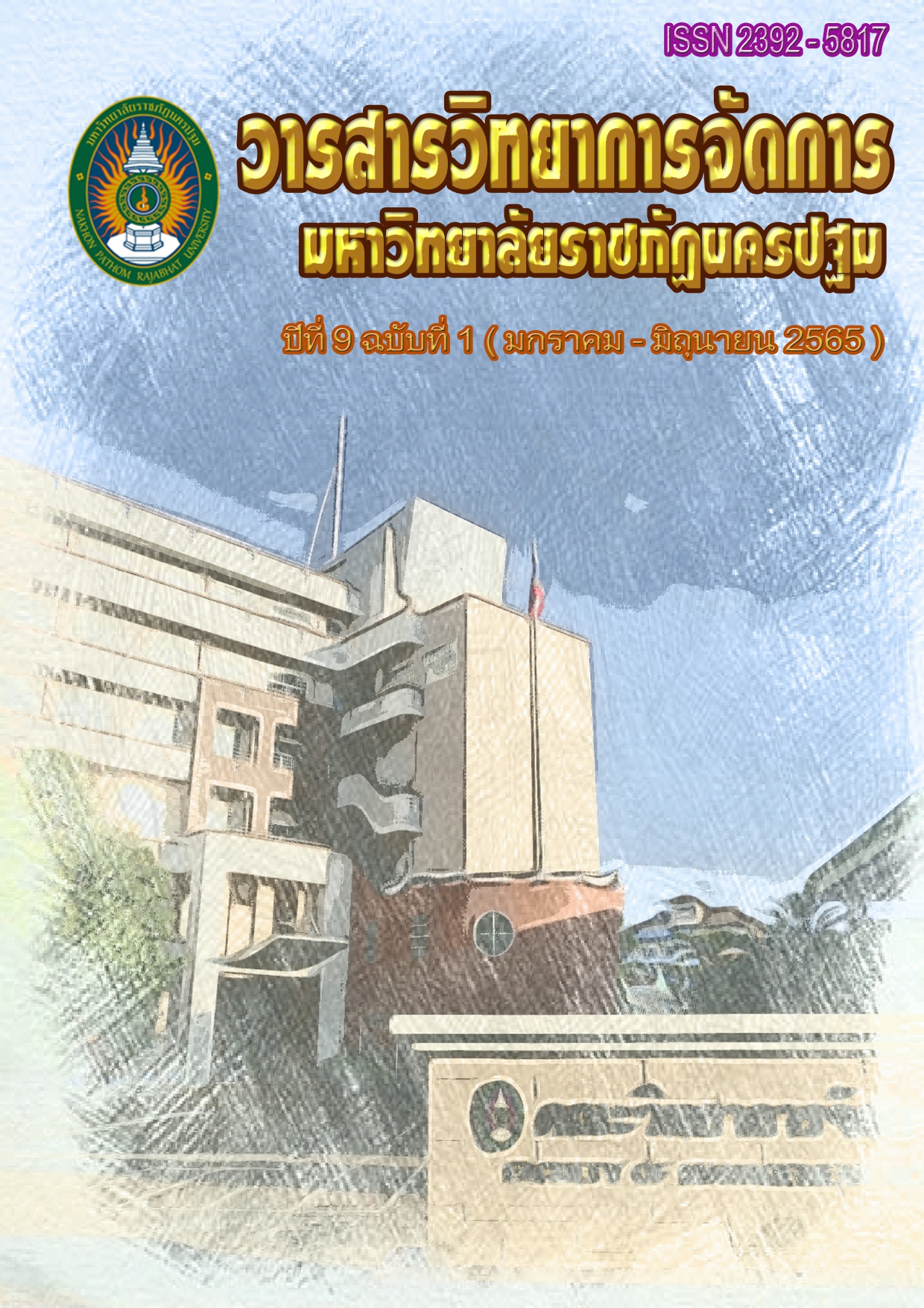Second Order Confirmatory Factor Analysis of Waste Reduction Measurement Model of Logistic Express Providers in Thailand : A Case Study of Nim Express Co., Ltd.
Main Article Content
Abstract
This study was designed to analyze the confirmatory second order factor analysis model of the waste reduction measurement model of logistic express providers in Thailand. The sample of the study was comprised of 205 administrators working for Nim Express Company Limited. The study instrument was a set of self-administrator questionnaires. The collected data were analyzed using percentage, mean, standard deviation, and confirmatory factor analysis.
The results of the data analysis were as follows:
1. As a result of the analysis of the confirmatory second order factor model in comparison with the empirical data, it was found that there was consistency between the model and the empirical data is indicated by the following values: X2/df = 0.0873 P value = 0.94456 RMSEA = 0.00 CFI = 1.00 and SRMR = 0.046. Moreover, the measurement invariance test showed no variance in term of factors and observed variables.
2. It could be concluded that the three important factors were: waste reduction in logistics, waste reduction in waiting, and reduction in waste. It was deemed greatly significant that the model should be put in use precisely because the regression coefficients of the latent variables on the external variables were 1.00, 0.98, and 0.93. As for the factor relating to the waste reduction in production cost, the coefficient of the latent variable on the external variable was found to be 0.63.
Article history : Received 26 November 2021
Revised 28 January 2022
Accepted 31 January 2022
SIMILARITY INDEX = 1.84 %
Article Details

This work is licensed under a Creative Commons Attribution-NonCommercial-NoDerivatives 4.0 International License.
The views and opinions of the article appearing in this journal are those of the author. It is not considered a view and responsibility of the editorial staff.
References
ผู้จัดการสุดสัปดาห์. (2564). สมรภูมิ “ธุรกิจขนส่งพัสดุ” เดือด “โควิด-อีคอมเมิร์ซ” ดันตลาดโตก้าวกระโดด. [ออนไลน์]. สืบค้นเมื่อ 7 สิงหาคม 2564 จาก https://mgronline.com/daily/detail/9640000077313
มาร์เก็ตตี้. (2564). ตลาดขนส่งพัสดุเติบโต แต่ละแบรนด์ต้องปรับกลยุทธ์สปีดหนีคู่แข่งทั้ง ‘ราคา-ความเร็ว’. [ออนไลน์]. สืบค้นเมื่อ 7 สิงหาคม 2564 จาก https://marketeeronline.co/archives/ 222852
มิติหุ้น. (2564). นิ่ม เอ็กซ์เพรส เผยผลการดำเนินธุรกิจในปี 2563 ปิดยอดขายอยู่ที่ 1,160 ล้านบาท เติบโตเพิ่มขึ้น 23%. [ออนไลน์]. สืบค้นเมื่อ 7 สิงหาคม 2564 จาก https://www.mitihoon.com/2021/01/28/219094/
สมพล ทุ่งหว้า. (2564). รายงานวิจัยเรื่อง คุณภาพการบริการและการกำจัดความสูญเสียที่มีอิทธิพลต่อวิถีใหม่ที่ก่อให้เกิดความสำเร็จของผู้ให้บริการขนส่งพัสดุด่วนแก่ผู้ประกอบการธุรกิจอีคอมเมิร์ซในประเทศไทย. กรุงเทพฯ: สถาบันวิจัยและพัฒนา, มหาวิทยาลัยรามคำแหง.
สุชาติ ประสิทธิ์รัฐสินธุ์. (2555). ระเบียบวิธีการวิจัยทางสังคมศาสตร์ (พิมพ์ครั้งที่ 15). กรุงเทพฯ: สามลดา.
สุภมาส อังศุโชติ, สมถวิล วิจิตรวรรณา, และรัชนีกูล ภิญโญภานุวัตน์. (2557). สถิติวิเคราะห์สำหรับการวิจัยทางสังคมศาสตร์และพฤติกรรมศาสตร์: เทคนิคการใช้โปรแกรม LISREL (พิมพ์ครั้งที่ 4). กรุงเทพฯ: เจริญดีมั่นคงการพิมพ์.
เอสซีบี เอสเอ็มอี. (2561). สร้างหุ่นสวยให้ธุรกิจกับเทคนิค “ลีนโลจิสติกส์”. [ออนไลน์]. สืบค้นเมื่อ 20 ธันวาคม 2563, จาก https://scbsme.scb.co.th/sme-inspiration-detail/leanlogistics
Hair, J. F., Black, W. C., Babin, B. J., & Anderson, R. E. (2014). Multivariate data analysis (7th ed.). Essex, UK: Pearson Education.
Hinkle, D. E., William, W., & Stephen, G. J. (1998). Applied statistics for the behavior sciences (4th ed.). NY: Houghton Mifflin.
Rovinelli, R. J., & Hambleton, R. K. (1977). On the use of content specialists in the assessment of criterion referenced test item validity. Dutch Journal of Educational Research, 2, 49-60.


